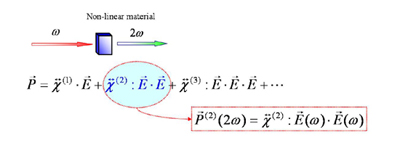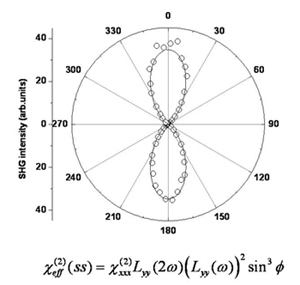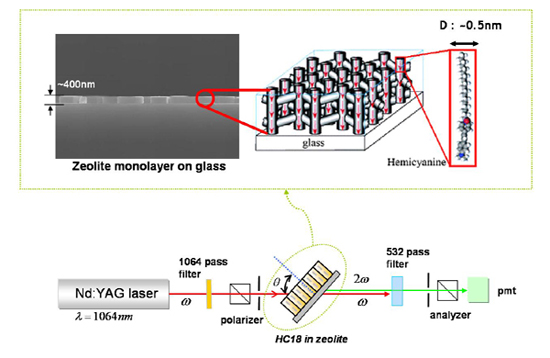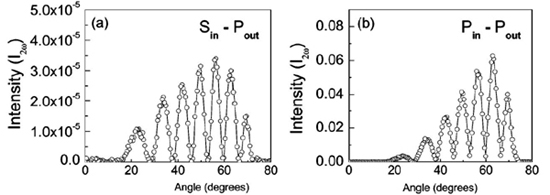SHG
From SMOSwiki
Second Harmonic Generation (SHG)
Nonlinear polarization provide a source for the generation of new waves. when the total field is expanded in terms of its fourier components, then the nonlinear polarization will consist of several terms oscillating at various combination frequencies. if the total field consist of two wave oscillating, second order nonlinear polarization will have component oscillating at 2w. Second harmonic generation (SHG) has been used to study the polar orientation or nonlinear coefficients.
Gwag et al., J. Kor. Phys. Soc. 45, 88 (2004)
nonlinear coefficients of Y-cut quartz
The second harmonic(SH) measures in the reflection mode, this technique have been developed as measurement probes of surface and interfaces. SHG by reflection is useful as a surface probe when the bulk materials are inversion symmetry and hence do allow SHG. Thus SHG by reflection is highly surface specific. Both the incident fundamental and the reflected SH light beams are initially s-polarized using two polarizers. Y-cut quartz has characterization of second order nonliner optical material. SH generation from nonlinear susceptibility also reflect the structural symmetry of the material.
SH intensity from a variation with azimuthal angle of the y-cut quartz in the reflection mode is shown in Figure
Jeon et al., J. Kor. Phys. Soc. 46, s159 (2005) pdf
polar ordering of hemicyanine (HC18) in zeolite
Continuous zeolite films supported on glass plates were prepared and a HC with alkyl chain lengths 18(HC18), dipolar NLO dyes having a long hydrophobic tail will enter hydrophobic zeolite channels with the tail part first, leading to aligned inclusion of the NLO dyes into the channels. typical experimental configuration for measurement d-coefficient by maker fringe methode as sample rotation
The typical plot of Ip-p and Is-p of HC18-incorporating zeolite films versus the angle of the incident beam
(with respect to the surface normal) is shown in Figure
and SH intensities are more specifically expressed as Ip-p and Is-p,
depending on the polarization direction of the incident beam,
(p-in p-out polarization combinations and s-in p-out polarization combinations)
Shim et al., J. Phys. Chem. B 110, 16874 (2006).






